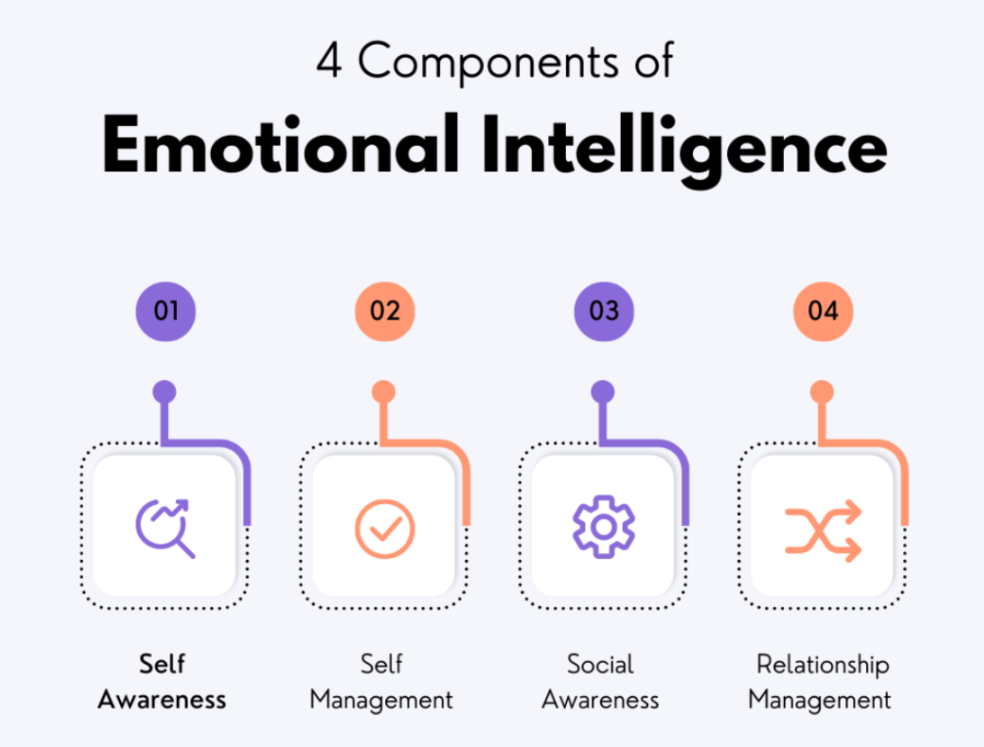WGU D072 OA Study Guide - 2025 | Mastering Organizational Culture and Emotional Intelligence 📖
Business success is not an accident; it is the result of operating within principles that drive organizations and people toward success. Whether you’re overseeing a group of employees, working for a company, or entering your first job, having a strong understanding of what makes organizational culture tick, and how to be your best self at work is incredibly useful. Still, this article is most informative for those reading the material in search of ideas linked to WGU D072 OA.
This article explores two critical concepts that are essential for any aspiring leader or professional to grasp:
1. Understanding the Competing Values Framework (CVF):It is an assessment instrument designed to assist an organization in assessing the desired organizational culture, establishing an order of preference between organizational objectives, and fostering a successful working climate within the organization.
2. Emotional Intelligence (EQ): An important interpersonal competence that makes one equipped to handle feelings, relate, and interact with others adequately.
All these topics are explained in a simple, non-academic manner, they are narrowed down to understandable lessons. Whether you’re a student, a manager, or someone seeking personal growth, this guide is designed to help you apply these principles in real-life scenarios, particularly within the context of WGU D072 OA and its associated questions
In Part 1, we’ll take a deep dive into the Competing Values Framework, examining how different organizational cultures work and how businesses can strike the right balance.
In Part 2, we’ll dive into the four EI dimensions and provide strategies for how to incorporate them into your personal and professional life.
How to Use This Guide for the WGU D072 OA Exam? 📖
The D072 Organizational Culture and Emotional Intelligence OA exam at WGU evaluates your understanding of organizational frameworks and interpersonal competencies. This guide simplifies the Competing Values Framework (CVF) and Emotional Intelligence (EQ) to help you grasp key concepts tested in the exam.
We also provide exam-style questions and practical applications to ensure you’re fully prepared for the questions on the WGU D072 OA exam.

Part 1: Understanding the Competing Values Framework (CVF) For D072 OA📝
Imagine a company as a tightrope walker balancing competing priorities: rewarding employees, responding to customers’ needs, increasing order, and promoting creativity. The Competing Values Framework (CVF) serves as a roadmap, helping leaders navigate these challenges. It reveals what a business values most and identifies areas for improvement. In simple terms, the CVF explains how organizations operate, what drives their culture, and how they can evolve to meet new goals. This understanding is particularly relevant to those studying WGU D072 OA questions.
The Foundation of the CVF: Two Key Questions
The CVF is based on two simple but profound questions:
- Does the organization focus more on internal collaboration or external competition?
- Does it prioritize focus and order, or flexibility and innovation?
These questions form two intersecting axes, creating a grid with four distinct organizational cultures. Each culture has unique characteristics, values, and personality traits.
Breaking Down the CVF Axes

The first axis is Internal vs. External Focus:
- Internal Focus emphasizes teamwork, employee well-being, and internal processes. It’s about building a cohesive and supportive work environment.
- External Focus looks outward to the marketplace, prioritizing customer needs, competition, and external opportunities.
The second axis is Focused vs. Flexible:
- Focused values order, efficiency, and predictability. This approach ensures consistency and minimizes risks.
- Flexible emphasizes adaptability, innovation, and creativity. It thrives on change and encourages experimentation.
Together, these axes form the backbone of the CVF, dividing organizations into four cultural types. Each type represents a unique way of working and thinking.
The Four Cultures of the CVF
Every organization fits, to some extent, within one of these four cultures. Each culture has a specific focus, strengths, and personality traits.
Clan Culture: Where Teamwork Thrives
Clan culture is sometimes compared to the atmosphere within a family. Just picture a setting where everybody in the corporate world is appreciated and employees are encouraged to work together. The focus of this culture is cooperation, and the purpose of it is to make the workforce people-oriented.
- Focus: Employee engagement, teamwork, and personal development.
- Personality Traits: Friendly, empathetic, nurturing, and inclusive.
- Strengths: High employee satisfaction and strong internal bonds.
- Best Fit For: Organizations that prioritize collaboration and a sense of belonging.
Adhocracy Culture: The Innovation Hub
Adhocracy culture is like a bustling start-up brimming with ideas. It thrives on creativity, agility, and boldness. In this environment, employees are encouraged to think outside the box and take calculated risks to drive innovation.
- Focus: Experimentation, risk-taking, and adaptability.
- Personality Traits: Visionary, daring, creative, and adventurous.
- Strengths: Rapid innovation and the ability to adapt to changing markets.
- Best Fit For: Businesses aiming to disrupt industries or lead in innovation.
Market Culture: The Competitive Edge
Market culture is all about achieving results. Picture a company where every decision revolves around performance, customer satisfaction, and staying ahead of competitors. This culture thrives on setting ambitious goals and meeting them head-on.
- Focus: Results, profitability, and external success.
- Personality Traits: Driven, ambitious, assertive, and focused.
- Strengths: Strong market presence and goal-oriented performance.
- Best Fit For: Organizations striving to dominate their market or meet aggressive targets.
Hierarchy Culture: The Organized Machine
Hierarchy culture is like a well-oiled machine. Everything is structured, processes are clearly defined, and efficiency is paramount. This culture values order, predictability, and consistency.
- Focus: Stability, control, and formal procedures.
- Personality Traits: Disciplined, detail-oriented, reliable, and methodical.
- Strengths: Operational efficiency and consistency in outcomes.
- Best Fit For: Large organizations or industries where precision and structure are critical.
Why Is the CVF Important for D072 OA?
The CVF is more than just a framework; it’s a tool that helps organizations understand their current culture and chart a course for the future. It answers critical questions like:
- What kind of culture do we have?
- What kind of culture do we need to succeed?
- How can we balance conflicting priorities?
For instance, a company with a Hierarchy culture might decide to adopt traits from Adhocracy to become more innovative. Conversely, a Clan-focused organization may incorporate Market culture elements to boost competitiveness. This appears in the WGU D072 OA exam questions, requiring students to identify which culture fits a given scenario.
Using the CVF in the Real World
Organizations use the CVF in practical ways to diagnose, plan, and transform their cultures.
- Diagnosing Culture
Leaders first can find out about the culture that is currently prevalent in the organization through the possibility of using methods like for instance the Organizational Culture Assessment Instrument (OCAI). Such assessment assists them to know their strongholds and the places that need enhancement. For instance, an organization may find that it has a strong Clan culture type when it requires more Market culture type to be effective competitively.
- Strategic Planning
Once the culture is understood it can be leveraged to make certain decisions mainly by leaders of the organization. If a business values stability but wants to innovate, it can borrow traits from Adhocracy while retaining its structured processes.
- Transforming Culture
Culture change is challenging, but the CVF provides a clear roadmap. For instance, a rigid Hierarchy organization might introduce collaborative practices from Clan culture to create a more people-focused environment. Similarly, an Adhocracy culture might adopt some Market traits to ensure its innovations translate into tangible results.
What Makes the CVF Unique?
What sets the CVF apart from other leadership models is its recognition of competing values. It acknowledges that businesses often face opposing priorities:
- The need for focus versus the drive for flexibility.
- The focus is on internal collaboration versus the pressure of external competition.
Unlike models that focus on one ideal, the CVF provides a balanced, holistic view. It also offers measurable tools like the OCAI, making it practical for leaders to assess and adapt their strategies.
Bringing It All Together
Think of the Competing Values Framework as a compass for organizations. It points out where a business stands, helps leaders plan where they want to go, and shows how to get there. Whether your organization thrives on teamwork, innovation, competition, or structure, the CVF provides a clear framework to understand and improve its culture.
By embracing the CVF, businesses can navigate the complex world of competing priorities and create environments that balance collaboration, creativity, competition, and control. In the next section, we’ll explore how emotional intelligence helps shape the workplace culture. Stay tuned!
Part 2: Emotional Intelligence and Its Four Main Areas For D072 OA📝
Imagine being able to understand and manage not just your own emotions but also those of the people around you. That’s the power of emotional intelligence (EQ). It’s a crucial skill set that can greatly impact personal and professional success. In this section, we’ll explore the four key areas of EQ: Self-Awareness, Self-Management, Social Awareness, and Relationship Management, breaking them down into simple terms to help you grasp their importance. For those tackling WGU D072, these insights offer practical, actionable guidance.
Understanding the Four Key Areas of Emotional Intelligence

1. Self-Awareness: Knowing Yourself
Emotional intelligence is the ability to identify personal feelings and how these feelings affect behavior. It is actually as if you are ‘seeing’ your emotions reflected while other people are simply the reflection of what you project onto them.
- What It Means: It is simply the capacity to identify your moods, feelings, and triggers. For instance, when you are angry, you quickly realize why you are angry and do not act on your anger instead.
- Why It’s Important: This way you are able to understand your emotional strengths that may help to build self-confidence and weaknesses that hamper decision-making.
- How to Improve: Just simple things like thinking through the day and asking questions like, ‘How did I react today, and why?’ is how self-awareness is built. Other activities, such as journaling or even meditation, basically anything that can make a person stray away from the mind may also assist in increasing an individual’s awareness of his / her feelings.
2. Self-Management: Staying in Control
Self-management is about keeping your emotions in check and responding to situations in a constructive way. Imagine a man or woman keeping her composure during a pressure—there you have the concept of self-management.
- What It Means: It is the moderating control over the wants and feelings of an individual. For example, rather than yelling at a coworker during hours of work stress, self-management enables you to argue diplomatically to escalate conflict.
- Why It’s Important: It prevents emotions from controlling your behavior, helping you stay professional and adaptable in any situation.
- How to Improve: Techniques like pausing before responding, practicing resilience in tough situations, and seeking feedback from others can strengthen self-management.
3. Social Awareness: Understanding Others
Social awareness is the capacity to recognize certain feelings of other persons. Now, picture yourself entering a room and feeling specifically people’s attitudes without anyone explaining it—that is social awareness at work.
- What It Means: It is about awareness of signals within the environment and feelings of others and your comrades. One of the key aspects of this skill, therefore, is empathy – the ability to switch positions and briefly feel like the other person.
- Why It’s Important: It enables you to relate with people and establish rapport and good relations with them. Social awareness enhances relationships as it makes one recognize a friend when they are annoyed or a customer’s needs for instance.
- How to Improve: Engage in Active Listening—do not interrupt, do not say anything while the other is still talking. This can also be improved by observing body language and also by asking pertinent questions.
4. Relationship Management: Building Strong Connections
Relationship management is the art of nurturing positive interactions. Whether it’s resolving a conflict, motivating a team, or collaborating on a project, this skill is key to building lasting relationships.
- What It Means: It includes motivating people, conflict-solving, and cooperation. Positive relationship management therefore includes statements and behaviors that demonstrate effective task and team focus, good communication/interpersonal skills especially when addressing difficult issues can be good examples of positive relationship management.
- Why It’s Important: Personal values also play a role in positive relationships since such positive relationships foster trust, enhance communication, and hence, enhance teamwork. This skill is more important if one occupies a leadership position in any organization.
- How to Improve: One of the goals that should be set is communication. Be clear, professional, and receptive. Calmness and relating with the other person during an intense conflict can also build up your interpersonal relationship skills.
The Role of Emotional Intelligence in Leadership
Leadership isn’t just about making decisions; it’s about inspiring and connecting with people. Emotional intelligence is a cornerstone of effective leadership because it helps leaders:
- Motivate their teams by understanding what drives them.
- Resolve conflicts by addressing emotions respectfully.
- Foster a positive work culture where trust and collaboration thrive.
A leader with high EQ creates an environment where employees feel valued and empowered, leading to improved performance and job satisfaction.
Developing Emotional Intelligence: It’s a Skill, Not a Gift
The best part about emotional intelligence is that it’s not something you’re simply born with—it can be developed. With consistent effort and practice, anyone can improve their EQ. Here’s how:
- Practice Mindfulness: Activities like meditation and journaling can help you stay connected to your emotions, boosting self-awareness.
- Focus on Active Listening: Pay close attention to others without interrupting, and make an effort to truly understand their perspective.
- Seek Feedback: Ask peers or mentors for honest feedback about how your behavior affects others. Use their insights to grow.
- Engage in Reflection: After interactions, take a moment to consider what went well and what could be improved.
Applications of Emotional Intelligence
Emotional intelligence isn’t just a buzzword—it’s a practical skill that applies to almost every area of life. Here are a few ways EQ can make a difference:
- Workplace Dynamics: High EQ enhances teamwork, improves communication, and helps resolve conflicts in a constructive manner.
- Customer Relations: Empathy allows businesses to understand customer needs better, leading to improved service and satisfaction.
- Personal Relationships: Recognizing and responding to the emotions of loved ones fosters deeper, more meaningful connections.
For example, in the workplace, a manager with strong EQ can sense when an employee is struggling and provide support before it escalates into a larger issue. Similarly, in personal life, being attuned to a friend’s feelings can help strengthen your bond.
Final Thoughts
Emotional intelligence is a revolutionary concept. It’s a perfect model where it is not only the focus on self-identifying but also the capability to touch and motivate others. From self-awareness to self-management and finally, social awareness, and relationship management, there are four main areas of emotional intelligence, which once developed will enhance your life’s quality. Therefore, EQ is not only the ability but a basis for further interpersonal interactions, making people believe in one another and win.
Tired of reading blog articles?
Let’s Watch Our Free WGU D072 Practice Questions Video Below!

Conclusion: Unlocking Success in WGU D072 OA 📄
Business is not the accomplishment of goals or career advancement – it is about knowing systems and individuals that form business. Mastering these two models, the Competing Values Framework (CVF) and Emotional Intelligence (EQ) provides the foundation for one’s professional or personal growth to become a better professional, leader, or entrepreneur. These concepts are in harmony with the ideas that are discussed within the framework of the WGU D072 module and D072 OA questions, so they are valuable for learners and professionals.
To support cooperation, innovation, market positioning, or order, this framework is effective in organizing and operating organizations in the modern world.
Equally important, through Emotional Intelligence, people are also given means for regulating their feelings and, at the same time, creating strong interpersonal relationships. When you master the skills of understanding yourself, managing yourself being aware of others, and managing relationships, you can handle complicated relationships, motivate groups, and have a positive influence on other people.
Together, these concepts enable you to envision challenges in fresh ways, exemplify caring leadership, and make good organizational choices for everyone. However, as you apply these principles, you need to keep in mind that it is a process that requires time. Be ready to learn, be ready to improve, and be happy to learn at every stage of your leadership development.
With the right mindset and tools, the possibilities are limitless. Your path to success starts here!






